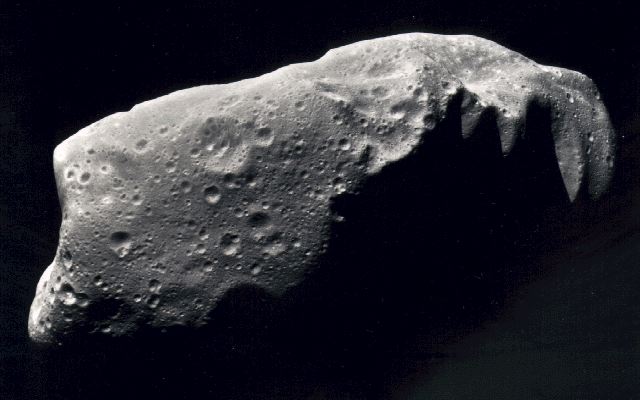
A group of billionaire entrepreneurs set up prospecting company Planetary Resources and plans to mine asteroids for their resources.
The multi-million-dollar plan would use robotic spacecraft to squeeze chemical components of fuel and minerals such as platinum and gold out of the rocks.
The founders include film director and explorer James Cameron as well as Google’s chief executive Larry Page and its executive chairman Eric Schmidt.
They even aim to create a fuel depot in space by 2020.
However, several scientists have responded with skepticism, calling the plan daring, difficult and highly expensive.
They struggle to see how it could be cost-effective, even with platinum and gold worth nearly $1,600 an ounce. An upcoming NASA mission to return just 60g (two ounces) of material from an asteroid to Earth will cost about $1billion.
The inaugural step, to be achieved in the next 18 to 24 months, would be launching the first in a series of private telescopes that would search for asteroid targets rich in resources. The intention will be to open deep-space exploration to private industry.
Within five to 10 years, however, the company expects to progress from selling observation platforms in orbit around Earth to prospecting services. It plans to tap some of the thousands of asteroids that pass relatively close to Earth and extract their raw materials.

Planetary Resources, is also backed by space tourism pioneer Eric Anderson, X-Prize founder Peter Diamandis, former US presidential candidate Ross Perot and veteran NASA astronaut Tom Jones.
The founders of the venture are to give further details in a press conference on Tuesday.
“We have a long view. We’re not expecting this company to be an overnight financial home run. This is going to take time,” Eric Anderson told the Reuters news agency.
The billionaires are hoping that the real financial returns, which are decades away, will come from mining asteroids for platinum group metals and rare minerals.
“If you look back historically at what has caused humanity to make its largest investments in exploration and in transportation, it has been going after resources, whether it’s the Europeans going after the spice routes or the American settlers looking toward the west for gold, oil, timber or land,” Peter Diamandis explained.
Water from asteroids could be broken down in space to liquid oxygen and liquid hydrogen for rocket fuel. Water is very expensive to get off the ground so the plan is to take it from an asteroid to a spot in space where it can be converted into fuel.
From there, it could be shipped to Earth orbit for refueling commercial satellites or spacecraft.
“A depot within a decade seems incredible. I hope there will be someone to use it,” Dr. Andrew Cheng, a planetary scientist at Johns Hopkins University’s Applied Physics Laboratory told the Associated Press.
“And I have high hopes that commercial uses of space will become profitable beyond Earth orbit. Maybe the time has come.”
Prof. Jay Melosh from Purdue University said that the costs were just too high, calling space exploration “a sport that only wealthy nations, and those wishing to demonstrate their technical prowess, can afford to indulge.”
Eric Anderson, who co-founded the space tourism firm Space Adventures, said he was used to skeptics.
“Before we started launching people into space as private citizens, people thought that was a pie-in-the-sky idea,” he said.
“We’re in this for decades. But it’s not a charity. And we’ll make money from the beginning.”